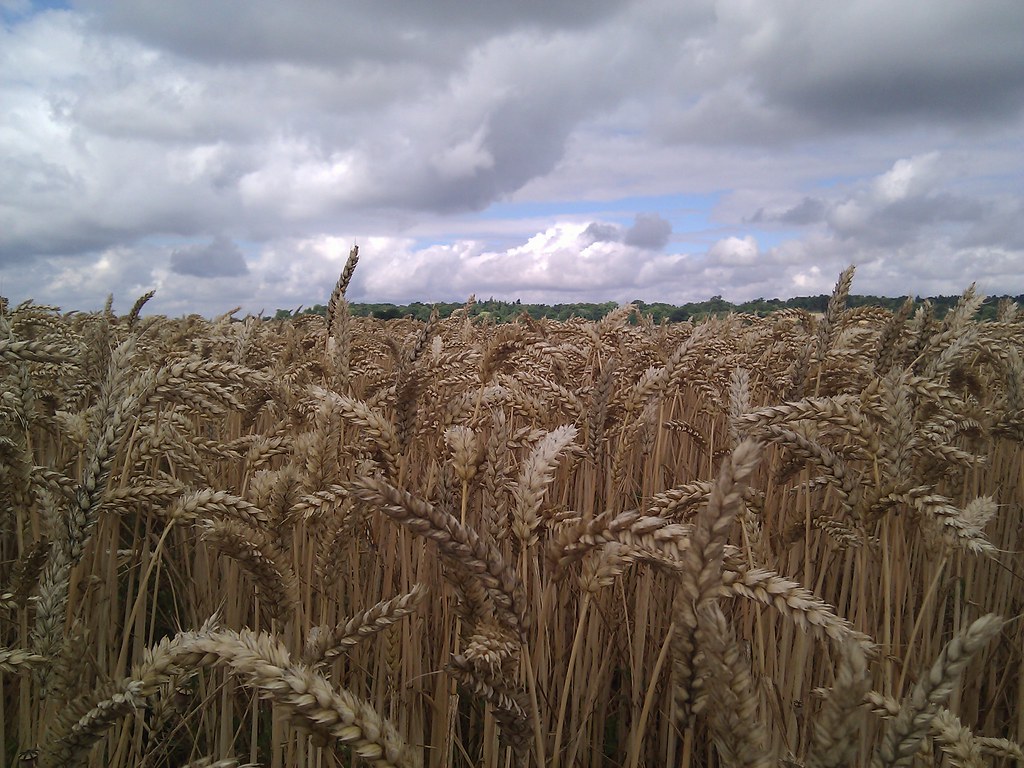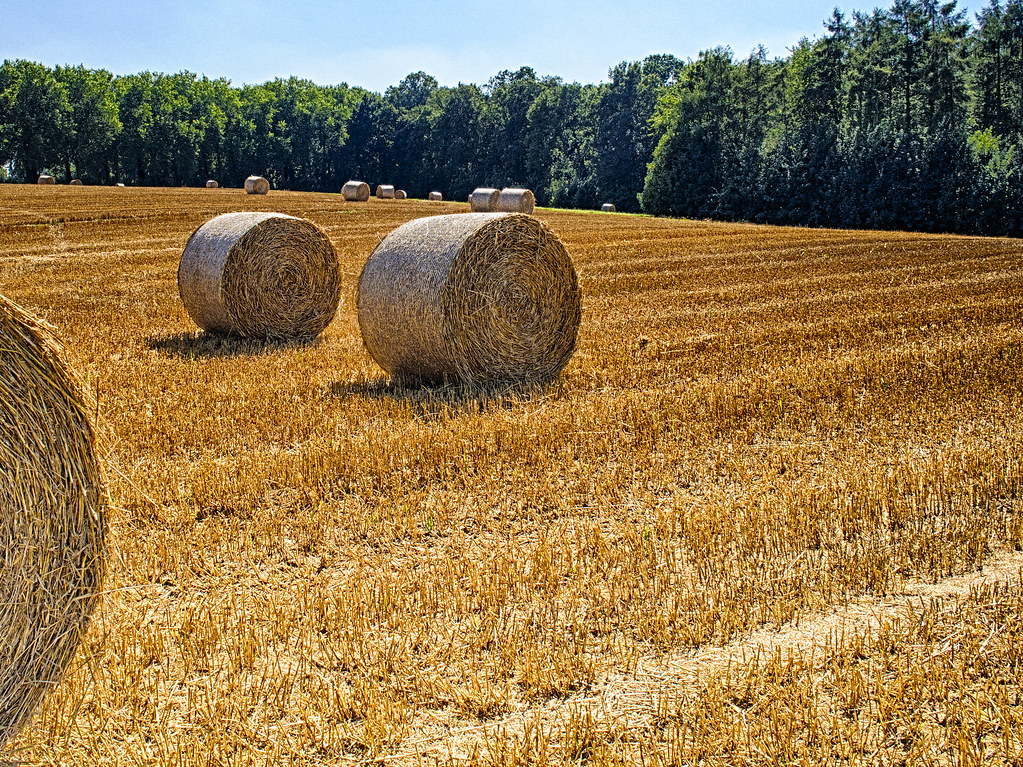Agriculture was very important in ancient Mesopotamia, the land between the Tigris and Euphrates rivers. In the fourth millennium BC this area was more temperate than it is today, and it was blessed with fertile soil, two great river, as well as hills and mountains to the north.

Image source: https://search.creativecommons.org/photos/a0c557d3-85fe-42d4-8138-6cc75fbf4f78 by User:NormanEinstein, based on a similar map from the 1994 edition of the Encyclopedia Britannica. Translated by user:Sting
What are cereals?
The term cereal derives frome the name of the Roman goddess Ceres, the divinity of vegetation and fields. Cereals are plants cultivated for their grain, they contains minerals, vitamins, fats, carbohydrates, oil and protein and in the form of rice, millet, wheat or maize in some developing nations, constitutes a daily sustenance.

Image source: https://search.creativecommons.org/photos/a5c05c8d-67de-4285-a01b-e6ece1aea0a8 by lamoix

Image source: https://search.creativecommons.org/photos/bbad1493-f7e2-4e9d-a56b-63c40796a6d1 by arifirh
Which were the first cultivated cereals?
The first crops were barley, wheat, various legumes, melons, grapes, pistachios, dates and almonds. From wild plants in Turkey and the Middle East, evolved the first peas, cherries, wheat, rye, olives and chickpeas. Scientists have verified that 65 million years ago wheat, rice, corn and sorghum evolved from a common ancestor weed.
Image source: https://search.creativecommons.org/photos/48ce4ae8-bcb0-4eee-b411-a72dbe833afe by Larry
The einkorn wheat is considered the earliest domesticated crop, first cultivated around 11,000 years ago. Scientists examining the DNA of modern strains of einkorn wheat found thet were similar to that grown in the Karacadag mountains. It is difficult to say which of spelled, rye and barley was cultivated first. Emmer wheat is a wild herb, whose seeds stick to the stem longer than those of other grasses. It is believed to be one of the earliest bread wheats along with another Caspian Sea wheat strain.

Image source: https://search.creativecommons.org/photos/3ae16656-a799-4840-a0e6-4df99706c1e7 by Starr Environmental
About 10,000 years ago in the 8th millenniums B.C. in what is now Syria, Lebanon, Israel and Palestine cereals were cultivated. In the Jordan valley, barley was first grown about 10,000 years ago. In Babylonia, Assyria, and the Hittite lands, barley was the most important cereal and was also used as a form of payment, the equivalent of one grain (1/22 g) being the smallest unit of measurement. From wheat and emmer were made beer and luxury foods. Other agricultural products were sesame which was cultivated and used to make oil the olive oil, flax which was used to make clothes, lentils which were preferred in Palestine while peas were grown in Mesopotamia. Throughout the Fertile Crescent figs, apple, pomegranate and pistachios have been found. In southern Mesopotamia palm wood was used in crafts, and dates were eaten fresh or dried.

Image source: https://en.wikipedia.org/wiki/Agriculture_in_Mesopotamia#/media/File:Sceau_kassite_araire.png
What tools were used for planting and harvesting?
Originally, sowing of the seeds was carried out by digging holes in the ground with the help of sticks. Obviously this took farmers a long time, so they look for ways to plant faster. The sticks were thus equipped with handles and arranged in a V-shape, the bottom of which would have scrape and dropped the seeds into the ditch. Thanks to this form of plow, farmers could work the land without having to bend down. Pushing the plow was still very laborious, so the Mesopotamians found a way to have it pulled by some pack animals, such as cattle and oxen. In addition to applying greater force, the use of the animals also allowed for faster sowing. Thanks to this method the farmer only had to drive the plow for greater precision.

Image source: https://search.creativecommons.org/photos/259ff50a-b032-4990-9ba5-daedca687147 by Darron Birgenheier
At the time of harvest, the farmers used a sickle that is a curved blade attached to a handle, capable of knocking down many stalks of wheat with a single stroke of the arm. Some of the earliest sickles were made from flint or polished stone, later, they were made with metals such as copper and bronze, making the instruments more durable and efficient. In this way cutting the crops was faster and less tiring.
To carry the harvest, Mesopotamians used baskets made of reeds which grew in the marshes of rivers. The reeds, not needing to be planted, watered, or harvested became a precious resource. At the settlement, the crop would be processed into the next day’s meal. The stones were used to grind grains or to cut the meats. At other times, the stone mortar (a solid round bowl) and pestle (a baseball bat-shaped object) were used to grind food. These two utensils are still present in kitchens all over the world today.

Image source: https://search.creativecommons.org/photos/05eb026e-577f-45a8-93b1-6d58591b7898 by Gary Todd

Image source: https://search.creativecommons.org/photos/5fbfcbee-9d08-4f73-9fd7-f65cef883370 by Joshua Tree National Park
How did the irrigation system worked?
Mesopotamia was characterized by swampy and dry areas, and the too hot and dry climate was not favorable for agriculture. It was therefore necessary to supply water to agricultural land. To irrigate the land, the swampy lands were drained and canals were built across the dry areas.
Mesopotamia became the first irrigation culture thanks to a well-studied irrigation system. The Sumerians operated on a large scale, draining swamps, digging canals and building embankments along the Euphrates River. A great deal of organized work and subsequent maintenance was required to build such a system.
Due to the presence of salt in the irrigation water, agricultural land was poisoned, rendering it unusable and thus favoring the fall of the first Mesopotamian civilizations. Since barley is more resistant than wheat to salt, it was grown in the least damaged areas. This stretch of sandy soil is now several miles away from Ur and Nippur.
How was the grain stored?
The harvest required significant labor, because it had to be completed before winter arrived. The grain was cut, dried and threshed by having the grain trampled by animals. The grain was then stored in granaries, where cats and mongooses were used to protect it from mice, or was transported along the waterways in other countries as well.

Image source: https://search.creativecommons.org/photos/8649a13f-18fe-45e6-bcfb-fb9a2102f105 by enneafive
Info sources:
https://en.wikipedia.org/wiki/Cereal
http://factsanddetails.com/world/cat56/sub363/item1513.html
http://www.ancient.eu/article/9/
http://www.mesopotamia.co.uk/staff/resources/background/bg08/home.html
http://westada.org/cms/lib8/ID01904074/Centricity/Domain/2825/Mesopotamian_Farming_Tools.pdf
